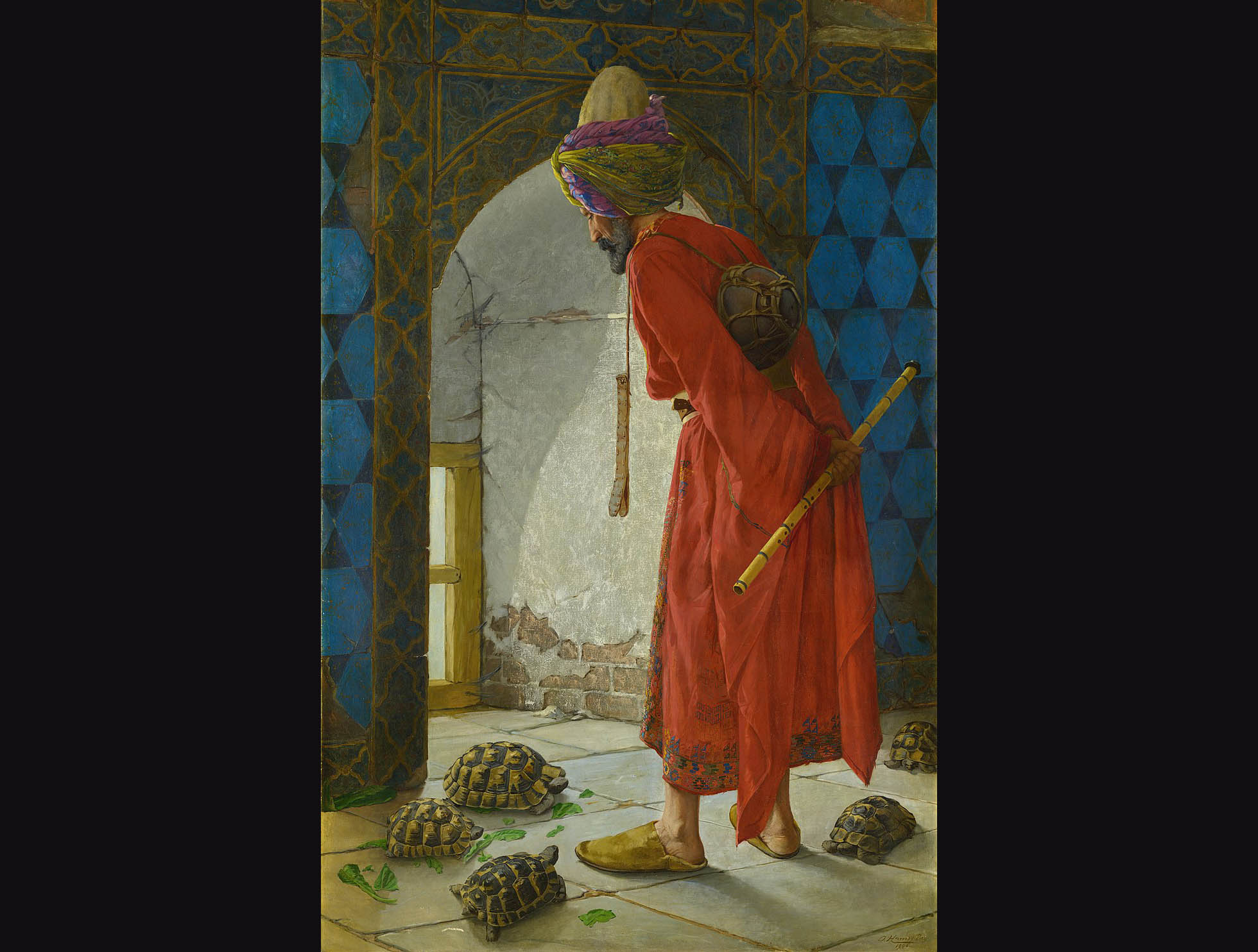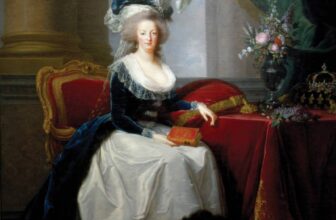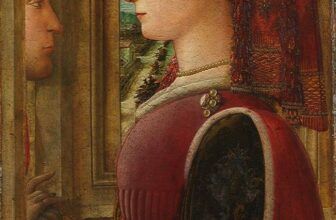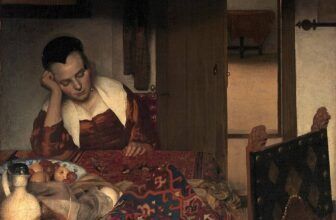
The Tortoise Trainer: A Masterpiece of Cultural Identity
In the rich and intricate tapestry of 19th-century Ottoman art, his painting continues to mesmerize critics, historians, and art lovers alike: The Tortoise Trainer (originally titled Kaplumbağa Terbiyecisi). Created in 1906 by Osman Hamdi Bey, this iconic work of art offers not only a window into the complex inner world of a late Ottoman intellectual but also a profound commentary on the socio-political fabric of his time.
From its minute details to its grand symbolism, The Tortoise Trainer transcends the boundaries of a traditional canvas. It becomes a mirror reflecting the changing world of the Ottoman Empire, an allegory of leadership, and a parable about the excruciatingly slow pace of reform in a vast empire.
Who Painted The Tortoise Trainer?
Osman Hamdi Bey (1842–1910) was not just a painter. He was a polymath—an Ottoman intellectual, archaeologist, writer, curator, and bureaucrat. Born in Istanbul to an elite family, he was educated in Paris, where he absorbed Western artistic styles and ideals, particularly Orientalism, and returned with a vision to blend Eastern subjects with Western techniques. As the founder of the Istanbul Archaeology Museums and the first director of the Academy of Fine Arts (Sanayi-i Nefise Mektebi), he played a pivotal role in shaping modern Turkish cultural identity.
His work as an artist was deeply entwined with his identity as a reformer. At a time when the Ottoman Empire was grappling with internal stagnation and external pressures, Osman Hamdi Bey sought to bridge cultures—not just through policy or archaeology, but through the emotional and symbolic power of art.
The Tortoise Trainer, perhaps his most renowned painting, is the embodiment of that mission.
What Is The Tortoise Trainer Painting All About?
Painted in 1906 (and a second version in 1907), The Tortoise Trainer at first appears to be a quiet, almost whimsical domestic scene. A bearded old man in traditional Ottoman garb—long robes, a red turban, and a divining staff—leans slightly forward, gazing down at several tortoises slowly crawling around the floor. The setting is a weathered, dimly-lit room—likely part of an old religious school or lodge (tekke). The man holds a ney (a Sufi reed flute) in one hand and wears a pouch on his back, possibly containing water or musical instruments. A long curved sword hangs by his side.
Yet, beneath this stillness simmers a rich undercurrent of symbolism and metaphor. The painting is not merely a portrait of a curious man training tortoises; it is a metaphorical reflection of the artist’s own frustration with the state of the Ottoman Empire. It becomes an allegory of governance, education, and reform—an artist’s elegant protest and philosophical musing.
What Is Happening In The Tortoise Trainer Painting?
On the surface, we see a man surrounded by tortoises—an unusual subject even by the standards of Orientalist art. But look closer.
The man—assumed to be a dervish, or perhaps a representation of Osman Hamdi Bey himself—is attempting to train the tortoises using traditional Sufi methods: music and patience. He is not enforcing authority or command; instead, he seeks harmony through gentle persistence.
The tortoises are crawling slowly, seemingly indifferent to the music or the trainer’s presence. Their sluggish movement and indifferent reaction serve as a potent visual metaphor for inertia—an empire, a society, or a bureaucracy that resists change, no matter how wise or well-intentioned the leader.
The chipped walls, faded tiles, and muted palette evoke an atmosphere of decay and forgotten grandeur. The man’s solitary stance and melancholic demeanor add emotional weight to the scene—he is not just training tortoises; he is battling time, tradition, and resistance.
Symbolism and Allegory: The Hidden Language of The Painting
Every element of The Tortoise Trainer is layered with meaning:
The Tortoises: They represent the Ottoman society or bureaucracy—slow, conservative, and resistant to reform. Training them symbolizes the daunting task of implementing change.
The Music (Ney Flute): Music here symbolizes soft power—an appeal to the spirit, not force. It reflects the method of reform that Osman Hamdi Bey himself believed in: education, art, and cultural enlightenment.
The Dervish/Trainer: This figure is a stand-in for the reformer, perhaps even the artist himself. Dressed in traditional garb but using tools of gentleness rather than force, he embodies the ideal of enlightened leadership.
The Setting: The dilapidated room might be interpreted as the state of the Ottoman Empire—aged, beautiful, but deteriorating. The faded tiles could represent lost cultural and scientific glory.
The brilliance of this painting lies in its ambiguity. Is the trainer hopeful or resigned? Are the tortoises progressing, or merely circling endlessly? Is reform possible, or is it a futile endeavor? Osman Hamdi Bey doesn’t offer answers—only a haunting, poetic question.
What Type of Art is The Tortoise Trainer?
The painting is a blend of Orientalist and Symbolist styles, with elements of Realism and Romanticism.
Orientalism: Although Osman Hamdi Bey was himself a product of the East, his Western education and painting technique place him in dialogue with Orientalist traditions. However, unlike many Western Orientalist painters who exoticized Eastern cultures, Hamdi Bey’s work was introspective, critical, and self-aware.
Symbolism: The painting is rich in metaphor. Like Symbolist art in the West, it uses ordinary subjects to evoke deeper philosophical and emotional truths.
Realism: Despite its allegorical intent, the painting is rendered in a highly realistic style. The textures, garments, and architecture are meticulously detailed.
Romanticism: The solitary figure, melancholic mood, and philosophical undertone allude to Romantic themes—individual struggle, idealism, and emotional depth.
In this way, The Tortoise Trainer straddles multiple traditions, embodying a unique cross-cultural synthesis—East and West, tradition and modernity, art and politics.
Where Is The Tortoise Trainer Painting Today?
The original 1906 version of The Tortoise Trainer is housed in the Pera Museum (Pera Müzesi) in Istanbul, Turkey. This private museum, established by the Suna and İnan Kıraç Foundation, is dedicated to preserving and showcasing Ottoman-era art and culture. It holds the most prominent collection of Osman Hamdi Bey’s works.
The second version, painted in 1907, is part of the collection at the Istanbul Museum of Modern Art (Istanbul Modern), though it is less frequently exhibited.
The 1906 version gained significant attention when it was sold at a Sotheby’s auction in 2004 for a then-record-breaking price for a Turkish painting: $3.5 million. It was eventually acquired by the Pera Museum and remains one of its most prized possessions.
Today, The Tortoise Trainer is not only a treasured artwork but a cultural icon—reproduced in textbooks, political cartoons, and popular media. It has become a metaphor in itself for discussions about Turkish identity, reform, and the role of art in society.
The Legacy of The Tortoise Trainer
More than a century after it was painted, The Tortoise Trainer still resonates powerfully. In fact, its message may be even more relevant today.
In an era of global transformation—where societies confront questions of identity, tradition, and progress—the painting serves as a timeless reflection. It challenges us to consider the means of reform. Should we impose change, or should we, like the dervish, trust in patience and persistence?
Moreover, it challenges the very role of the artist. Osman Hamdi Bey did not merely create beauty. He created meaning. He did not isolate himself from politics and society. Instead, he engaged with them—subtly, wisely, and enduringly.
The Trainer, The Empire, and Us
Osman Hamdi Bey’s The Tortoise Trainer is a masterclass in allegorical storytelling. On its surface, it is a quaint, even humorous scene: a man trying to teach tortoises. But beneath the surface lies a rich and emotionally charged narrative of leadership, societal inertia, cultural identity, and the slow, arduous nature of reform.
The man in the painting is all of us—teachers, leaders, reformers, visionaries—trying to nudge the world forward, one slow, stubborn step at a time.
In the final analysis, The Tortoise Trainer is not merely about an empire or an artist. It is about the eternal tension between progress and resistance, between idealism and reality. And in that, it becomes universal.




